My short but intense visit to Turner’s Auto Wrecking in Fresno, California to pick up the transmission for my truck confirmed the fact that people—the right people anyway—are infinitely more interesting and compelling than cars. Even if it’s 100 acres of cars, a substantial percentage of them vintage cars dating back to 1928.
This reality influenced my coverage of the yard, as it’s not nearly as comprehensive as I thought it was going to be. Sorry. Why? I much preferred hanging out with Jerry than with his cars and parts. He’s a truly amazing fount of knowledge and stories, and his warm demeanor, treating every visitor and caller with sincere attention and consideration, are qualities that even the most fascinating car out back can’t hope to compete with . I would have loved to spend even more time with him, but he’s a very busy guy, fielding a constant stream of calls and telling his guys over the radio just exactly where a certain car or part is on the vast property. And yes, he’ll be 93 in a few weeks. And no, he has no plans to retire.
I arrived at Turner’s Auto Wrecking at 10pm on Sunday night, and parked in front. I had about as good a night’s sleep as one can have some thirty yards away from a major train street crossing. I woke early, at about six, to the repeated blasting of another train’s horns. This time I got up, stepped out, and looked around a bit to see where I had landed. The red sun in the hazy sky was just rising over the 100 acres of cars beyond the fence.
The sign on the fence, painted on an old car door, sums it up.
There was quite a pile of items out front. I forgot to ask why. Freebies? Overflow? It’s all just part of the setting. Turner’s is obviously not at all like one of those big corporate wrecking yards.
I stepped back inside my van to make some breakfast. At about 6:40, I heard a vehicle pull in and park next to me. It was a slightly battered somewhat older white Chevy pickup. I stepped out at the same time the driver stepped out. Over the sound of another train rolling though the intersection, I said:
You must be Jerry Turner.
Yes I am. Welcome.
You always come to work this early?
Always. I have some things to do first, so we’ll get to your transmission at nine. Feel free to look around.
I went back in the van and finished my breakfast. When mother nature called, I went in the office and asked if I could use the bathroom. I have facilities to deal with that in the van, but if I can use a bathroom or outhouse (or a remote cat hole), I prefer that.
Jerry was hard at work looking over his piles of notes and requests and such. The bathroom’s back over there in the corner.
Somewhere on the other side of this mountain of parts.
There’s also a wall full of pictures and mementos. More on that later.
Having done my business I headed out back. As I said, this is not going to be a comprehensive look at everything. There simply wasn’t enough time, and it was just too overwhelming. It’s just so vast…
When I first saw this forest of sticks pointing skyward, I couldn’t figure out what they were. As I got a bit closer, it was obviously a vast collection of steering columns. This is a good preview of things to come, all in great multiples.
Transmissions? Did someone say transmissions?
Rows and rows of them.
And more rows.
And then there’s a whole building full of them. No wonder Jerry had a T-85 for me. And of course he knew that he did as soon as I called him. His memory is absolutely mind-boggling. I felt brain dead in his presence.
Need a radiator fan?
Drums and hubs; both outside and inside these two buildings, which look to be some old farm outbuildings.
Jerry’s family originally came to California for the Gold Rush in 1850 but found their gold in ranching and farming. I’m guessing that Jerry’s interest in cars and motorcycles was a lot bigger than in growing beans or picking fruit. So he started this wrecking yard in 1960 on part of the family ranch. It pretty well took over most of it, but he’s got a couple more that are dedicated to orchards and such. But he seems to spend all or most of his time here, Monday – Friday, and Saturday until noon.
For some reason, way too many of my shots turned out fuzzy. Looks like power brake boosters on one side and steering control arms on the other.
Transmission innards, I assume. I suppose Jerry knows what a lot of these are, or maybe this building is getting away even from him?
Lots more drums, discs, and hubs. There’s more in the distance.
And more.
Not done yet.
A pile of more recent plastic grilles that don’t deserve to be sorted and stored properly.
Rear axles. About an acre of them.
Rows and rows of windshields off in the distance.
More transmissions.
That leads to the engines. Looks like a slant six there in front.
A mixture of the two.
Most of the engines are in this vast building.
Some of these shots are fuzzy. As was my head, from the combination of a short night and the sheer overwhelming aspect of it all. I didn’t really stop to look at stuff in detail, just walking and shooting randomly, mostly. There’s just no way to properly absorb it all, unless you want to spend a week or two. Or maybe hire on as a part picker.
How much of this will ever get sold and reused is a good question.
It’s mixture of vintage and more recent engines.
For some reason, this one caught my eye. And you can be sure that if someone called Jerry looking for a head for a 216 Chevy six, he’ll say yes and know just where it is. And what kind of shape it’s in. And what you’re going to want to do with it.
There’s more transmissions in here too.
Need a straight eight for your Buick? Jerry’s got it; almost certainly more than one. I saw a good number of very old flathead inline engines from the pre-war and early post-war era.
Manifold manifolds.
The exhaust manifold farm. They grow well here on these trellises.
Time to head out to where the actual cars are. Lots of other stuff too.
This VW 411 caught my eye.
Ford F-1 hoods, anyone?
I meandered into the motorcycle section on the way out to the cars.
Here’s a bike I’d pretty much forgotten ever existed: the Yamaha TX750. A new parallel twin designed to replace the older and well proven XS650. The 750 had a number of advanced features, including Omni-Phase balance shafts. But engine failures started happening not long after it arrived in 1972, and required several recalls and numerous fixes.
This was quite atypical for Japanese bikes, and the 750 quickly got a bad rep. It was withdrawn from the market after only some two years.
A Grand Prix among the bikes.
This little Suzuki two stroke looking like a club racer also caught my eye.
Old wire wheels. There were some old wooden spoke wheels too, but the dry weather and sun undoubtedly made them useless.
An interstellar interloper has landed among the bikes.
Not just cars and bikes…stoves and other appliances too.
One of the many sheds.
The next shed over is the house of carbs. Sorry about the blurry picture, but seeing rows and rows of these four barrel carbs is worth it.
Lots more in these racks.
And on the shelves.
Generators galore…enough to light up all of Fresno.
And a couple of intact cars too.
Time to head out and walk in some direction; any direction.
Sweet little Fiat 1100.
This Avanti was quite intact and certainly not being parted out.
Looks pretty much road-ready.
The old ranch house and water tower.
More cars, as far as the eye can see…
Newer as well as older.
A-Bodies.
Japanese cars of all kinds and vintages.
An Opel GT.
Lots of VWs. Not any that are salvageable, though.
Ramblers.
A rare aftermarket extended-cab Mitsubishi.
First year Ranchero.
Old timers.
A Ford section.
A Mercury “Montchero”.
Jaguars and other Europeans.
Looking across the irrigation ditch to another vast tract of cars over there. Too much…
This Lincoln had “Do Not Part” written on it.
As did the matching coupe.
An older Lincoln coupe.
No, I didn’t walk the south 40.
I just held up my phone to share a sense of the vastness of the place with you. A golf cart would be just the ticket.
The irrigation ditch is dry these days. That’s the office way off in the distance.
Corvairs.
Chryslers
Mish-mash.
A fine old DeSoto hardtop coupe.
I was spent. It’s just overwhelming. And as I was walking out to the gate, here comes a new arrival.
A Mercedes W126 that looks to have had an engine fire.
There’s a whole other large yard across the street, that seems to have only vintage cars. I didn’t go in. I should have; look like mostly 60s and 70s cars. Next time…
You should go see it for yourselves.
I headed back in, seeing it was about nine now. Among the many pictures on the wall, I noticed this one, signed by the legendary race car driver, Bill Vukovich. From Fresno, Vukovich started out in midgets and quickly worked his way up, winning the Indy 500 in 1953 and 1954. He was killed during the 1955 500 while in the lead, due to a chain reaction crash started by a spin out by Roger Ward. Many consider him to be the greatest American race car driver. I read about him as a kid in the 60s.
I asked Jerry about the picture, and he immediately launched into a story about Bill and his two brothers, whom he knew very well. He grabbed the pile of papers from his desk and told me that he had been sent what he considered the most definitive analysis of the crash that killed Vukovich. The pile was tall, and about half way through of sorting through them, keeping some and discarding others, he gave up and just told it to me verbally, as well as some of the early history of the Vukovich brothers.
I was in the thrall of a man who could undoubtedly tell compelling stories all day long; every day, for that matter, as he’s lived a very full life and seems to remember every detail.
But Jerry has work to do, as the phone rings regularly. I took this very short and random video of him doing what he does, although that’s hardly all he does. He has a wonderful phone voice, and from the first time I called him about my transmission, he was extremely courteous and warm. Everyone gets that same treatment, including some tourists who walked in asking if they could tour the yards. Most certainly! But not before he insisted on giving them each a bottle of water from the fridge.
Jerry told me he’s had busloads of 20 Swedes show up, as well as other Europeans. And in the last 20 years, the business has become national and international, with some 50% of parts sold being shipped out.
Here’s Jerry in 1950, when he was 18. Motorcycles were obviously a big part of his life. I wish there had been more time to hear more of his life story.
Lots of pictures on the wall, and above the fridge there was something of a memorial to his son that died quite some years back. I did hear one of the yard workers, Kip, call Jerry “gramps” on the radio, and I saw him briefly in the office, and noticed a certain family resemblance, so presumably the torch will be passed to him when the time comes. But a tremendous amount of knowledge will be lost when that happens.
Jerry had one of his most capable guys take the overdrive off my transmission and mount it to one from the yard with a broken O/D case, due to a broken U-joint. Jerry inspected the insides carefully and called it good. It was original, which actually makes me more confident, since mine had been “rebuilt” by a transmission shop, but obviously they made a mistake assembling it, as some of the little roller pins from the bearing that failed had fallen out. I had found them in the bottom of my pan when I changed the oil in it two years ago. I posted about that, and a number of commenters told me it was likely just a matter of time before that bearing went bad. It did just that, two years later.
It’s a more involved job than I might have anticipated, and it took a couple of hours. Jerry popped in several times to see how it was coming and to offer advice and help as needed. There was a bit of a hitch near the end, and Jerry took charge at that point. His knowledge on just this one transmission was as if that’s all he ever did, work on old transmissions. Not so. It’s rather mind-boggling, actually.
Jerry is a living legend, and made a vast number of friends over the decades, quite a few of which are no longer alive. It was a privilege to meet Jerry, and when he said “goodbye my friend”, they were words that will resonate with me for some time.
At a time in my life where I sometimes feel like I’m getting too old to take on certain jobs (like changing my transmission) and ponder how to prioritize my time and ponder whether “retirement” has any relevance to my life, meeting Jerry has given me some fresh perspective and put some new spring into my step. I’m 25 years younger than he is. You don’t stop living fully, working and doing things until you do…by choice or necessity. Like Jerry, I’ll take the latter.
We loaded the transmission into the van just before noon. I had anticipated having to stop somewhere on the way home for another night. But I wanted to get home, so I gulped down a quick sandwich and pulled out at exactly 12:00, and hit the road home. 660 miles later, I pulled into our driveway at 9:55 pm. Just under ten hours, average speed 70. Two quick gas stops.
Now to get that transmission back in.






















































































































































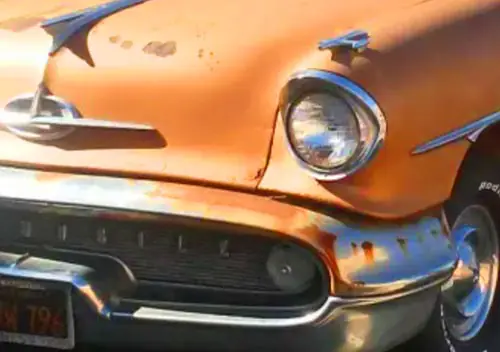
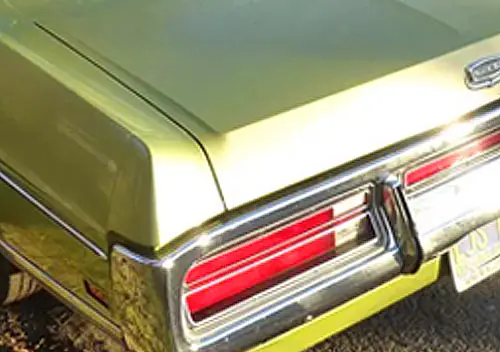
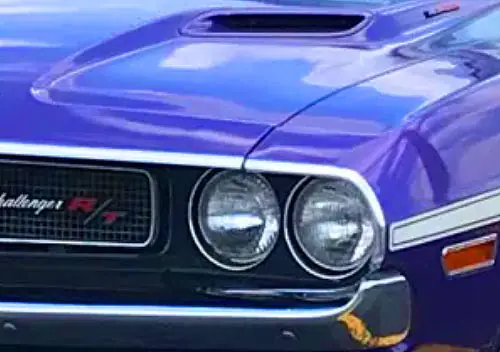


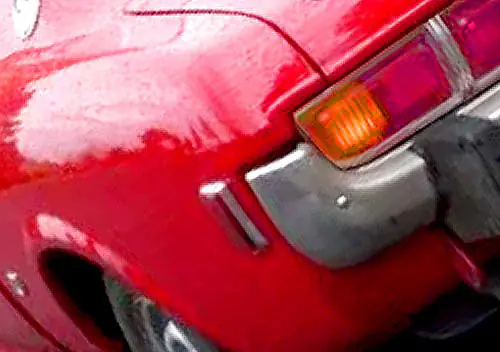
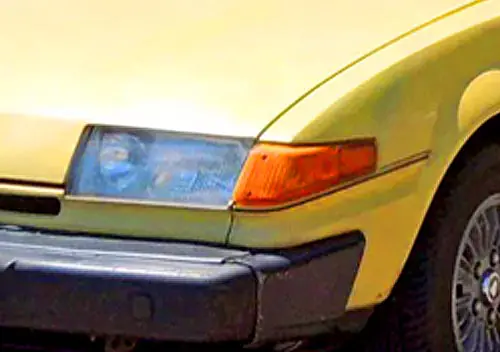

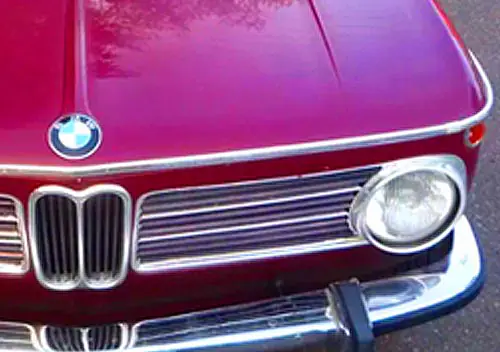
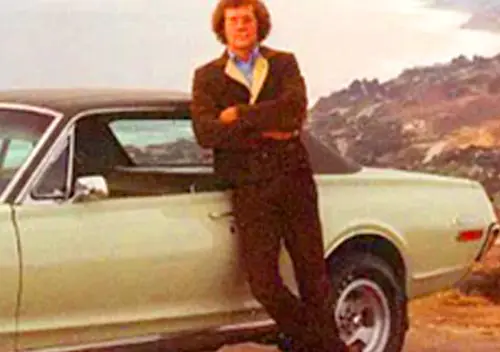
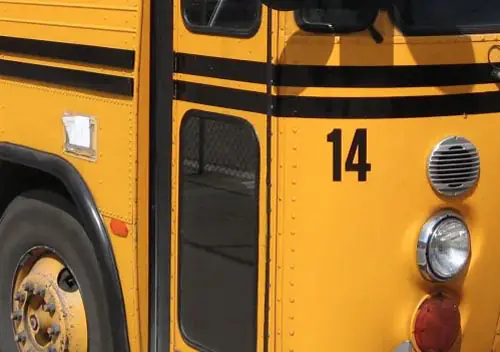
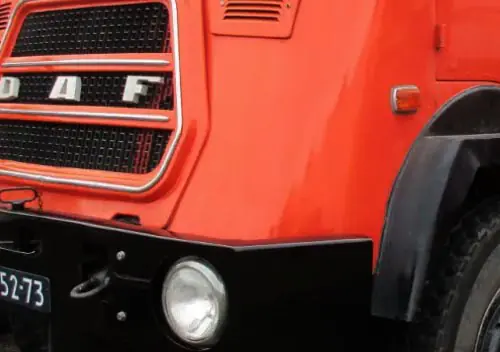
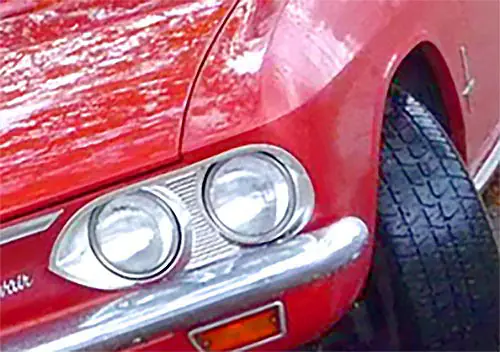
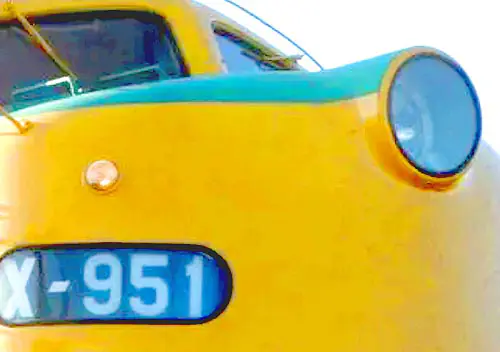
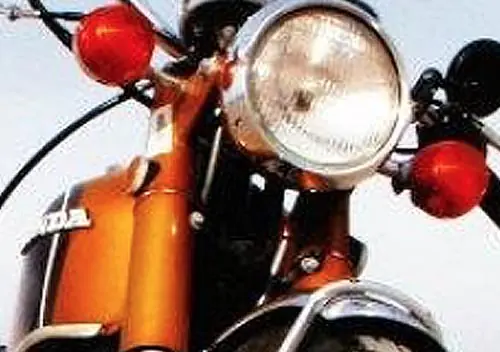
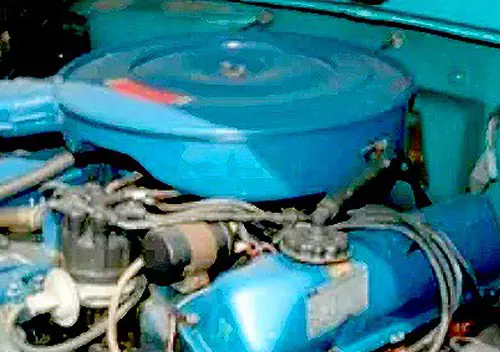
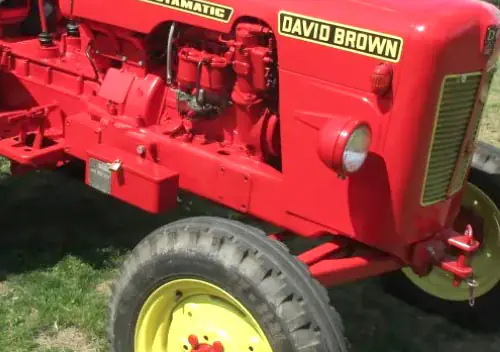
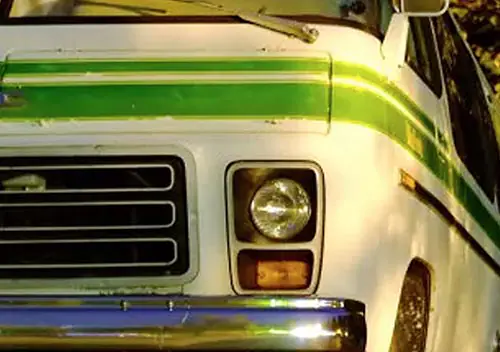

Wow.
There needs to be a way to download the contents of Jerry’s brain to an external hard drive (the size of the wrecking yard), or a cloud (the size of a cloud). As you say Paul, the knowledge that will be lost when he is no longer there will leave a hole in that place that can’t be filled.
Thanks for this entry Paul, and may both you and Jerry continue your earthly journey for many years.
What a yard! I could get lost in there for weeks. Def not LKQ!
Amazing.
The world needs more Jerrys (and Carols from yesterday). They help put everything in a better perspective and certainly inspire people with their endurance.
I thought Horopito was bad but this is on another scale altogether though intimate knowledge of where everything can be found is similar, I could spend days wandering around there.
+1
Hey, you made pretty good time. I have been meaning to visit Turner’s for a long time. I don’t really need anything at the moment but that doesn’t matter. At Jerry’s age he has lived beyond the actuarial tables. My Mom died last year at age 94 and that reminded me that you have to take every opportunity to spend time with the people who you care about while they are still here.
I don’t know what the plan is for the future when Jerry is gone. It could get complicated but he is a smart man and I would hope he has a plan in place.
I know someone in Napa CA who has a large, 10 acre, yard full of nothing but old stuff. He is over 80 years old and when I was there back in early June I couldn’t help but wonder how much longer he would want to keep working and if he had a plan of succession.
It’s a tough business to pass along to your children unless they already know the business and enjoy it. The more likely scenario is the owner dies with his boots on and the yard closes usually for good because there isn’t a family member who wants to take over the business and the business is too expensive for someone to come in and buy it make it viable due to the escalating value of the land. The proceeds from the yard won’t pay the debt from the purchase. Junkyards can exist where there is cheap land and low taxes. Turner’s benefits because the land has been in Jerry’s family for a couple generations bought when the it was much cheaper and zoned agricultural with much lower property tax.
Thanks for the fine travelogue, Paul.
“The proceeds from the yard won’t pay the debt from the purchase.”
Never mind the hair-raising report that the environmental survey will surely generate. I don’t know that it is possible to run a yard for that long without creating the kinds of issues nobody thought about 30 or 40 years ago but which keep lawyers very busy today.
The physical place seems overwhelming from the pictures, which only captured a small slice of it. It reminds me of much smaller, but similarly diverse and (to my eye) unorganized places I visited as a young man.
The old guy seems amazing, and I, too, wonder what will happen to the place when he passes. Who else could run such a place, and the organizational scheme (or lack of one) would seem to make it impossible to identify and sell much of the stuff.
There was a place not far from me where the elderly owner, though still alive, became unable to run the place. It was an old-school junkyard, which must have dripped significant volumes of automotive fluids to the soil and water. I explored it a few times a few years ago, and it seemed to have closed in the 80s. It was a fairly small place, but full of rusty old hulks with rusty old stories unknown to me. I felt privileged to walk among them for a while.
Finally, after many years of legal wrangling, the place was (mostly) scrapped out, likely at significant cost to taxpayers. On one hand, it is good, because it was an eyesore and a source of pollution, and much of the stuff in there, ravaged by weather and oxidation, was likely not worth the trouble of salvaging. On the other hand, it makes me sad to know that there is one less cool old junkyard around.
Would love to see photos of this old school bus junkyard. (if you have any from your visits) Thanks in advance!
Oh you bet your sweet bippy! Not only the EPA but various watchdog agencies such as Bay Keeper are looking for evidence of ground water contamination and run off that gets into storm systems or flows directly into streams, rivers and any other body of water. I live in the San Francisco Bay area. There has long been concern about what is polluting the bay and associated waterways and who is responsible and how did it get in the water.There is a long history of all kinds of heavy industry along the shores including 5 oil refineries. All manner of nasty stuff has been dumped into the bay. They ruined the sizable shrimp and oyster fisheries.
Environmental efforts finally gained traction and all industries including junkyards, anywhere near the shoreline were targeted and investigated and many closed down. There was a great big yard similar to Tuner’s that was between 10 and 20 acres with lots of old stuff. Martinez Auto Dismantlers on Waterfront Road had been in business since the 1940s and closed down in 2002. They were located on diked and filled marsh land along the Carquinez Strait. They had a massive plume of oil emanating from the center of their property that was flowing in a subterranean arc towards the water. I saw a document that mapped the dimensions. I can’t begin to estimate the volume of oil and other chemicals this indicated but it could only have been the result of years and years of pouring oil into a hole in the ground. The only way to mitigate is the eventual removal of hundreds of tons of contaminated dirt. There was no way the junkyard could afford to do it and I am sure that the owners , seeing the handwriting on the wall took action to protect their personal assets next doorfrom the lawsuits to come. The expense to fix the problem falls on taxpayers, as usual. I’ve seen some documents that showed some of the maneuvering undertaken. I don’t know the details of the actual mitigation but the site was completely cleared and now has a cap of fresh soil. Somewhat ironically a gigantic Co-Part yard went in next door about 5 or 6 years later.
I can’t tell you the shape Jerry Turner’s land is in. He has at least one irrigation canal running through the property and he some of his land is active agricultural. You might think he has been somewhat careful over the years. The enforcement policies are probably different between the Bay area and Fresno anyway for a variety of reasons. I’d like to think that Mr. Turner has been as good a steward of the land as he is a purveyor of high quality junk.
Your posting reminded me of a junkyard I went to in NJ many years ago. Back then, as now, tires were very difficult to deal with, and the owner of this place charged people to take tires off of their hands. The problem was, he just stacked them up on his property…until the fire happened.
The pile caught fire somehow, and burned for days, endangering the lives of emergency responders and sending smoky stuff into the atmosphere and oily stuff into the soil and ground water. As is far too common in cases of such dramatic irresponsibility, the responsible parties lacked the means to pay the cost of cleaning up the mess that they made.
Well it is located in Fresno which is a step above Bakersfield in desirability which isn’t much. The area he is in is industrial and warehouse around him, besides other yards, pretty much bordering US 5. I’ve seen the place twice when driving by and craning my neck to see what was over to that side. There was a place like that in Richmond where you could see Studebakers stacked higher than the wall around the yard. Then it disappeared never having a chance to go visit.
That sounds like Deal Auto Wreckers which at the corner of West Gertrude and Richmond Parkway. They had a huge fire about 7-8 years ago and I think that was the end of them. They stacked the old stuff on racks along the Parkway side and you could see through the fence and above it. They had a lot of interesting stuff. The last time I drove by they had an Airflow and something that looked like a Dymaxion, a tear drop shaped body skinned in aluminum like a 1930s Buck Roger’s spaceship . I was going to check that one out the next time I went through but the fire had other ideas.
Turner’s cannot be seen from the freeway, you are looking at other smaller yards in the area.
You have to exit and come see us.
Great story, Paul! What a man, what a place. I have always loved junkyards since I was a kid. I have wandered around a few, but never anything like this. I’m going to put it on my bucket list.
inspirational! Thanks Paul!
Blown away! And that 411 would have caught my eye too.
Wow, what a fun trip! Jerry sure contradicts the stereotype of junkyard proprietors as surly misanthropes; no wonder people visit from miles around.
Excellent! Now I have a new reason to visit CA, these old yards are a vanishing breed. Glad to see Jerry seems to be thriving. Seeing as how I can easily spend 3-4 hours if I want at a modern, organized, and manageably sized yard, I think I’d need to pack a bag, pitch a tent (or find the RV section and set up camp) were I to visit Jerry’s! I hope the install goes as well as the removal and the truck is back on the road soon.
Here’s a link to guy like Jerry, who has amassed a wealth of parts/knowledge, focused primarily upon ‘A’ body Mopars.
https://youtu.be/vGoanHYZe0M
These guys with their YEARS of accumulated knowledge are a dying breed, and will be/are being sorely missed, as well as their collections. I visited an LKQ yard once, it was my first and LAST time visiting them as the experience was unsatisfactory and COSTLY as well!!
That is insane. It is mind boggling how anyone could find anything in all those piles of parts spread out over such a huge area. I wonder how often the part pickers run across snakes and such that have taken up residency in those piles and bodies?
I hope your transmission install goes smoothly!
I can’t imagine the amount of wasps and hornets and such. Imagine the size of the nests in parts left alone for years and years.
Makes my head spin.
Ive been weirded-out by stuff like that since I was 19. I was weed-whacking in a field and accidentally whacked into a large hidden wasp nest.
They chased me for over a block, circling my head and stinging me until I could pass for a TNG-quality Klingon.
So I have my reasons.
My wife takes care of the wasps, and leaves the spiders for me. Works out great.😀
All I can say is WOW!
Great story and photos. This Jerry seems to have certainly found his passion in life, which is probably what keeps him going strong at 93.
Looks like one could spend days wandering around in there and still not see it all.
True that. Passion and luck. We can’t control the latter, so that’s why we all need to focus on the former.
Thanks Paul, I too want to go visit Turner’s.
Oh boy, I would join Jim Klein on a weeklong safari through this place. It is something to ponder, that guys like this build up these huge collections of stuff that is valuable to someone here and there, but which is probably not valuable to anyone in bulk. When they die too many times families don’t know where to turn and the stuff is all hauled off to the recyclers. It would be impossible to duplicate this collection, I am sure.
That is sadly the common outcome of these gems as their owners pass on, more often than not the inheritors want nothing to do with these places and like you said just sell everything at scrap price. I daydream about taking over an operation like this.
It does appear that his grandson is quite involved in the operation. And the cars at least are in a computer database now, at least to one extent or another. Certainly the newer ones.
This would be the spot for some to gather for a CC meetup weekend. A looong weekend would be needed.
A crew of CC journalists should be dispatched to this location for a full extensive multi article report. This is just over the top.
Thanks Paul for documenting your visit and sharing with us.
A lot of it is seemingly now basically a parts car repository. I’m assuming (having never been there myself) that the newer stuff now comes in, is catalogued and displayed and then removed on a rotation basis like most modern yards, and the older, “interesting” stuff and parts sit forever so that the parts can be there for the person that needs them and calls Jerry. As in nobody needs Jerry to keep a 2008 Altima in perpetuity. Yet. But if someone drags in a ’56 Buick it might go to a different section of the yard. I’m totally guessing of course but that would make sense.
Kind of like a MUCH larger operation than the one yard I go to that has both the normal turnover cars (they sit for a while and then get crushed on a rotating basis) as well as the “Junkyard Heirloom Gallery” cars that have been there for years or decades and aren’t going anywhere, some are so picked over it’s hard to even tell what they were, I usually only share the more complete ones, almost all of which have been there since I started visiting.
The real money is likely in the rapid turnover cars and the metal once what isn’t sold by the part is crushed and sold as scrap steel, but the passion and what keeps it all interesting is of course in the historic stuff. Jerry knows offhand exactly where every ’64 Pontiac is, but likely would need to look in the computer if you need a tail light for a 2008 Chevy Aveo. That’s not to take anything away from Jerry at all, the dude is clearly amazing, but going forward how is anyone going to find the specific brake drum they need in that warehouse-sized area of drums?
I love these types of spots. I used to go to a motorcycle junkyard in Barton NY (K&R Cycle Salvage) right on the PA border, it was run out of an old train depot by a heck of a character. To owner of an older Japanese bike, it was Mecca. Similar type of organization, with a similar photographic memory by the pipe smoking owner. Need to use the bathroom? “That drain over there works just fine.”
Wow. Everything from an Avanti to a Kia Sportage. What an amazing place and man. Something like this would be a dream business to run for me.
This would make a wonderful CC meet up if Jerry would allow it.
I’m sure he would. But preferably in the spring or fall.
Indeed. The later, the better. Canadians still can’t get to US yet.
I was thinking of the weather. Summer is a bit toasty in Fresno.
Yes, the average for Fresno is 93, 99, 97, and 91F June through September. Although this summer they have had a lot of days over 100 as per my nephew up the road in Merced. I concur given how many high 90 – low 100s around me not far from the Bay. Tomorrow is 101F and smoke so I’ll be in Alameda at 80F. You want May or October for 80F weather in Fresno.
I’ll take March or later November for low 60 degree weather if given a choice. You can always layer up a little more but there’s a limit to what you can take off…
I’m calling dibs on the Tucker section.
Simply incredible. As I was reading your commentary and looking through the pictures, I wondered where Jerry’s customers came from. And then I got to the sentence stating that 50% of parts are shipped out. That’s fascinating – and I can’t help but wonder what proportion of that is international vs. within the US.
Thanks for this tour; it made my day.
This seems a tale from a Curbside fantasy.
This is a land where parts of the once-wanted are kept respectfully, eagerly waiting, in ordered rows, for those who might yet reclaim them for the road, overseen all by a dusty and kindly and warm mystic who knows their every way and foible.
It is, surely, a blurry-pictured fever-dream from the relentless Fresno heat, some melted mirage in the early morning after a restless night. Or would be, were it not that you can attest to its reality for us readers spread around the world. An extraordinary place for us: perhaps for most others, just a vast dust-desert of rust and irrelevance, and neither of these is wrong.
I wonder of you felt the soulfulness in the fuzzy images we see here? It might just be a very familiar Australian-esque light, that of extreme heat approaching as the day begins, that gives these images to such thinking, but it seems beyond that. Much of this treasured stuff is never going to serve a function again, much as we all might dream and wish it. It sits on the edge of its own doom, within a drought that may well never end in places like this. The collection leans and points towards a sort of extinction not just of itself but of the place, an extinction it helped – in an iron irony of polluting – to bring about.
And gloriously undead amongst it all and ruling it, a kindly king who knows all details of his subjects, surely the last ruler here, but judging by how well he lives and talks of his kingdom, you would never know how close his rule is to its conclusion.
An immense above-ground graveyard, governed with courtly care. I can think of many formal places of burial far less decent than this.
When I am a lost soul, a useful transmission awaiting a new salvation, a being devoid of its useful body, I would like my time to pass in a place as good.
Where’s the evil tempered, oil-stained , and possibly rabid, dog?
I thought all scrapyards had at least one of those.
The place I used to go to had a couple of very wolflike dogs that would run up to cars barking and growling, and generally scaring the crap out of everyone going in there. I somehow discovered that just giving them a back and chin rub made me an instant favorite. I took a friend out there with me once, telling him on the way, “Don’t be scared of the dogs, they will bark and growl at you, but all you need to do is rub their back near the tail, and you will be their best friend!”. It didn’t work, the bigger of the two came running out, ears pinned back and my friend refused to get out of the car. Once the bigger dog saw me, he started wagging his tail, and “Wooo-woooed” me, and the smaller one (Still over 100 pounds I would say)came out and both of them got back and chin rubs, and they followed me around while I went out and pulled out two small block Olds heads (My friend was paying me to fix his 68 Cutlass’s 350 that had overheated and warped the heads to the point they were junk). I advised him to just get a used 350 from ’68 to about ’72 and drop it in, but he wanted to just do the heads The block didn’t need to be decked, a shock to me. The heads I lugged back to the counter myself were in great shape and he got another 3 years out of the Cutlass and by then it was rusted so badly it was time for a new used car, which ended up being a ’72 Cutlass Supreme, blue with a white vinyl top. I moved out west soon after I did the heads on my friend’s car, and when I came back 7 years later, I was shocked to see the larger of the two dogs was still there, alive and well, with 2 smaller Doberman mixes that were just as easily tamed as the old one was with him. The junkyard is still open, and there are still a couple of nasty appearing big dogs that scare people away. I’m a dope, I guess, dogs like them don’t frighten me, it’s the quiet ones that stare at you I don’t want near me.
@ NRD :
Just so ~ dogs are pack animals and many want to test your mettle before actually biting you .
Many years ago my son got a HUGE pit bull puppy, it wasn’t too big but had enormous feet so I made a point of making friends with it, it’s still alive if barely, it well remembers me whenever I go visit, no one else touches the poor thing because he’s so beat up now but I make the time to gently scratch his ears and stoke him .
In general I’me afraid of strange dogs having been bitten quite a lot when I was a wee laddie but if there’s a flea wagon at any work place or neighbor’s house it behooves one to make friends with it .
His newest & youngest pooch is bitch and she recently brought me her chew toy to throw for her to chase….
Dogs give so much and ask so little, once you get past their guarding nature .
-Nate
This place has always been mythical to me; often referenced by the Peterson family of car magazines, and various other auto journos.
What a treat to have pictures and, especially, a face to put to the name.
Thanks, Paul. And best of luck with your T85.
That shot of the brake boosters and control arms are reminiscent of drifts of skulls and femurs spilling off the benches and shelves in the Catacombs.
Excellent.
And much more accurate than “graveyard”, where everything is buried.
It’s both amazing and slightly sad as all those hard to find trim parts bake in the sun.
I was stunned to see that Yamaha TX750 in the collection – I’d be tempted to drag it out of there and slowly start putting it back together.
The problem with the TX is that the engine was a wonderful touring motor, but totally unsuited for stoplight to stoplight drag races. Which is how most motorcycle owners rode them back in the mid-70’s. I’ve talked to a few owners and the general word is that if you run full synthetic oil in the bike, you’re not going to have engine problems.
And, of course, 45 years later, nobody’s running a survivor in stoplight drags.
Yamaha, back then, bucked the Honda/Suzuki trend trend of four cylinder everything by rationalizing how many cylinders a motorcycle had by the size of the engine. Once you got past the 360 and 400 twins (because that’s what Honda had, and it owned the market), you got a single cylinder for your 500 (XS500), two cylinders for your 650 (XS-1 thru XS650) and your 750 (TX750), until the failure of the latter got them to go for three cylinders (XS750) and later bore it out (XS850). You want four cylinders, like the other three are doing? You gotta buy an 1100 (XS1100) for that and bigger (XV1200 and 1300).
Yamaha always had the most interesting bikes, once the two-strokes were taken off the market. Everybody else got dull with four cylinder UJM’s.
XS500 was a dohc twin.
I’ve had 3 XS650s and looked at several XS500s.
It’s bordering on surrealist industrial art to be admired until the time comes that it has to be cleaned up or buried at the expense of the community..a modern Ozymandias …
It also needs to be said that what you see there now is nothing compared to what was there 15-20 years ago.
Also that there were a few other large yards in the area.
What a fascinating place. It astonishes me that Jerry can remember where everything is. I can’t even remember where I put stuff in my 2 car garage! He should donate his brain to science…
Would love to be the one to give that Avanti a good home.
…!
Holy wah! I’m completely overbowled, and all I did was just look at the pictures!
A fantastic place ! . I’m in need of some 1940’s Chevy Huck brake parts, now I know where to go .
I wonder if they’d have an old Honda Tiddler……? .
There used to be lots of these huge older junkyards up in that area but they’d never let you go look and often claimed not to have the vehicle I could see over the fence….
-Nate
Or a 1948 Town Shopper?
Paul, thanks for the great article.
The printed material info in the place would only be exceeded only by what is in Jerry’s head.
Perfect subject for a glossy hardcover book.
and
HAPPY BIRTHDAY JERRY!
Thanks for taking time to do the writeup and take the pictures for all of us, Paul. I’ve never seen one of the big Western yards, and this really is astounding.
More pictures courtesy of Motor Trend (2014): https://www.motortrend.com/features/more-photos-of-the-100-acre-vintage-junkyard-at-turners-auto-wrecking/
And another hundred or so here (Hot Rod magazine, also 2014): https://www.motortrend.com/features/acres-of-great-junk-and-barn-finds/
Mind blown, no other words!
It reminds me a little of the Caveman in Riverstone Sydney he had a sign on the gate reading over 200 cars for sale ran when they arrived his fenceline was hedged with cars stacked 5 high in order a stack of VWs a stack of Holdens several stacks of Vauxhalls, problem was he didnt like pulling parts from cars other than that he had a goldmine it mostly got scrapped when his lease expired,
His neighbour specialised in Fords and had enough Galaxies to start his own solar system,
Paul, did you get a chance to check out the custom car crushers Jerry built. If I remember correctly he was the innovator of the rat-trap style, which is a 12 x 22ft slab weight connected by a hinge to a platform at one end. The other end is raised with cables by a winch, suspended with a counterweight and held in place with a release of some kind. The condemned car is loaded onto the platform, the operator activates the release and the slab heads down towards the platform as fast as it can crushing whatever is on the slab. Voila! One instantly flattened car ready to be loaded onto a flatbed trailer and hauled away. I saw an interview he gave many years ago showing how they work, He was justly proud of them.
No.
I felt very time constrained, as I really wanted to get home that night. And Jerry seemed plenty busy. I didn’t really go there with a journalist’s hat on; it was about getting my transmission. But as I said, I would have liked to spend more time there. Maybe another time.
Great report!
Thank you.
I just got to page 3 today!
Not sure where to start, there could be so much said.
Business first; the missing overdrive parts stash has been located. lol
The pick for me would the ’41 Buick, especially if it is a rare Business Coupe.
What’s the word, Bossman?
Edge of this seat is beginning to deform. lol
I’ve been watching for the reverse lockout rod too.
Moyer’s in Crestline, Ohio is a place like this, or it was. They are still in business, but I haven’t been there in years. Last time I went he had school busses from the 30’s back in there. Model T’s also.
I hope Jerry is still plugging along and had a nice holiday season.
Some of the transmissions and what looks to be engines sitting outside will be ruined by the weather, so I wonder why that is. With the volume of parts removed from vehicles, he must have a fortune in wages paid to the workers to do all of that over the years. I didn’t see employee’s in the pictures, it could be that today labor is way too expensive for this kind of operation.
Duean :
You have to work in a junkyard to fully grasp the mentality .
I’ve seen so many unobtanium engines, trannies, rear ends, tri power carby set ups and so on get ruined by the weather .
Most junkyard owners would rather scrap stuff than to sell it affordably .
I think this place isn’t quite like that .
-Nate
The large aerial photo on front of the counter; I wonder the significance?
I guessed it serves as a map of the facility.
Fantastic! I missed this first time. Amazing man and facility.
Did he say he was 93? You mention he was 18 in 1950, which would make him about 89. This would be good, since it would be a bonus four years for him to provide his super valuable services.
Thank you for the article on my Uncle. He is for sure a “car guru”. As far as the origins of the family, the family ranch was founded during the depression by his father William “Pop” Turner. The family came to California for the Gold Rush in the 1850’s to Mariposa County from Indiana not Arkansas during the Dust Bowl.
Thanks. I’ll make that correction.
My dad introduced me to Jerry Turner when I was 11 or 12 years old. I am now 66 years old and I still buy standard and hard to find parts at Turner’s Auto Wrecking. I have bought parts for cars, trucks, Harleys and model A’s.
Correction required:
The main yard is 87 acres, the extension across the street is 13 acres. This makes a total of 100 add of cars. This does include the land of houses and the orchards.
Done!
i grew up playing hockey with Jim Turners grandson Kyle. We always had fun out there at the junkyard riding dirtbikes and always getting into things. good times and great article
WOW! This place is amazing! Would love to surprise my hubby with a trip here. Is it a place you can actually walk around and explore? This would be a great birthday present for his 65th.